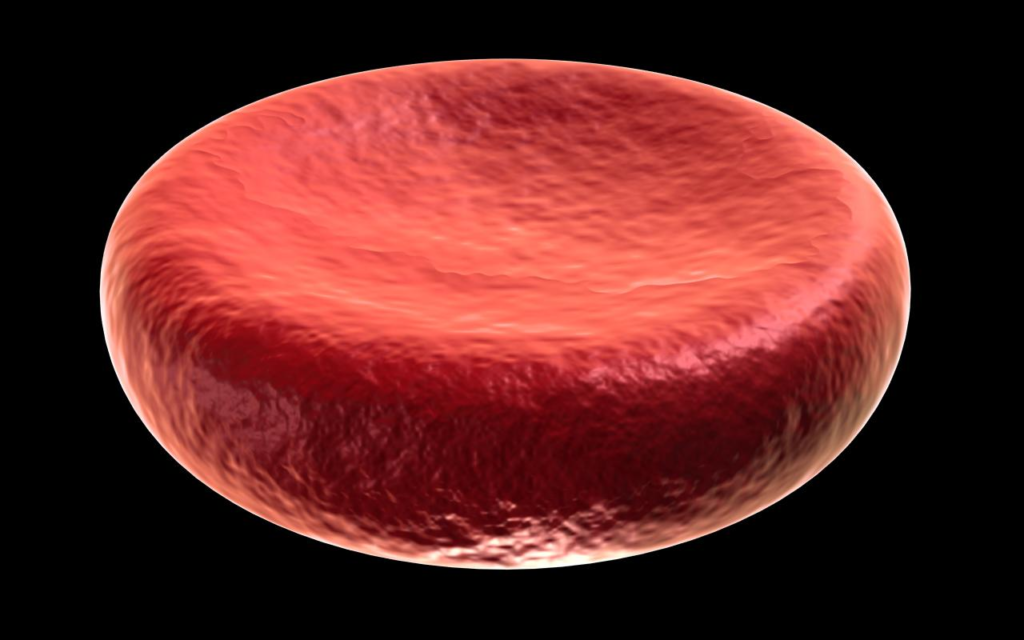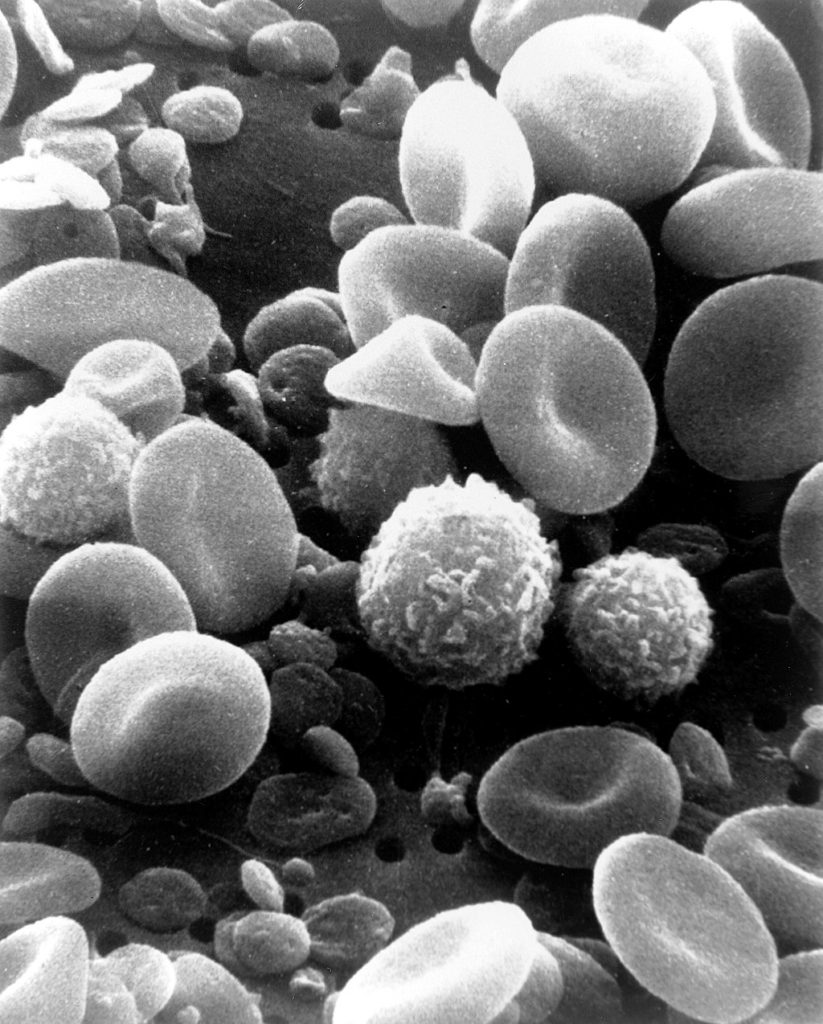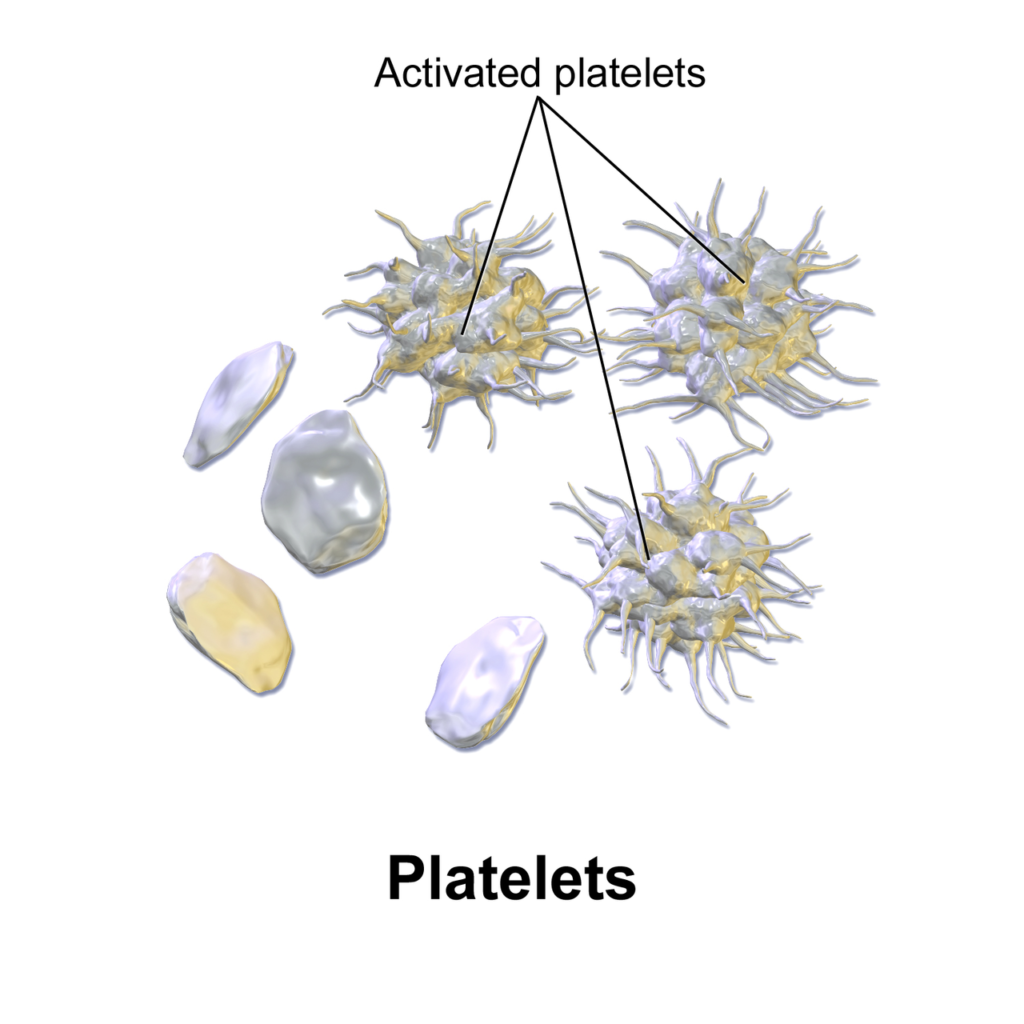Red blood cells (RBCs):

The Red blood cells, also known as erythrocytes, transport oxygen from the lungs to various tissues in the body and carry carbon dioxide, a waste product, from the tissues back to the lungs for exhalation. They possess a biconcave disc shape and contain the protein hemoglobin, which binds to oxygen and carbon dioxide, facilitating their transport within the bloodstream. These cells play a vital role in oxygenation and gas exchange, ensuring the delivery of oxygen to cells and the removal of carbon dioxide as part of the body’s respiratory and circulatory systems.
Characteristics:
Shape: RBCs are small, biconcave, disc-shaped cells without a nucleus in humans. This shape provides a high surface area-to-volume ratio, allowing for efficient gas exchange.
Color: They are red due to the presence of the oxygen-binding protein hemoglobin.
Lifespan: RBCs have a relatively short lifespan of about 120 days, after which the spleen and liver remove them.
Functions:
- Oxygen Transport: RBCs primarily transport oxygen from the lungs to tissues throughout the body. Hemoglobin within red blood cells binds to oxygen in the lungs and releases it in tissues where cellular respiration requires oxygen.
- Carbon Dioxide Transport: RBCs also facilitate the transportation of carbon dioxide, a metabolic waste product, from tissues to the lungs for exhalation.
- Buffering: RBCs can function as a buffer, assisting in maintaining the blood’s pH balance.
White blood cells (WBCs):

White blood cells, or leukocytes, constitute a crucial component of the immune system and the blood. They are specialized cells with the primary function of defending the body against infections, pathogens, and foreign substances. White blood cells recognize and combat viruses, bacteria, fungi, and other microorganisms, as well as remove damaged or abnormal cells. They play a pivotal role in the body’s immune responses, including inflammation, antibody production, and immune surveillance, contributing to maintaining the body’s health and safeguarding it from disease. Different types of white blood cells have specific roles in immune defense.
•Characteristics:
- Nucleus: Unlike red blood cells (RBCs), white blood cells (WBCs) have a nucleus and are larger in size.
- Variety: White blood cells (WBCs) come in several types, each with specific functions. Common types include neutrophils, lymphocytes, monocytes, eosinophils, and basophils.
Functions:
•Immune Defense: WBCs are a critical part of the immune system. They help defend the body against infections and foreign invaders like bacteria, viruses, and fungi.
•Phagocytosis: Some of the WBCs, like neutrophils and monocytes, are phagocytic cells that engulf and digest pathogens and cellular debris.
- Antibody Production: Lymphocytes, a subtype of white blood cells (WBCs), generate antibodies—proteins that precisely target pathogens.
- Immune Memory: Memory B cells, a specific subtype of lymphocytes, retain knowledge of past infections, enabling the immune system to mount a more effective response upon reinfection.
Platelets (Thrombocytes):

Platelets, also known as thrombocytes, are small, colorless cell fragments found in the blood. They play a crucial role in the process of hemostasis, which entails stopping bleeding by forming blood clots. Platelets are vital for maintaining vascular integrity and preventing excessive bleeding when blood vessels are injured. In response to vascular damage, they become activated, clumping together at the injury site to create a temporary plug. Additionally, they release chemical signals that enhance clot formation. Platelets contain important substances, including enzymes and growth factors, which contribute to blood clotting and tissue repair.
Characteristics:
•Cell Fragments: Platelets are not complete cells but relatively small, disc-shaped cell fragments.
•Lifespan: They have a very short lifespan, typically surviving 8 to 10 days in the bloodstream.
Functions:
•Blood Clotting: Platelets are crucial in forming blood clots (hemostasis). When a blood vessel is damaged, platelets adhere to the site, become activated, and release clotting factors, thereby preventing excessive bleeding.
•Vasoconstriction: Platelets can constrict blood vessels (vasoconstriction) to reduce blood flow to the injury site, further aiding in hemostasis.
